
Rob van Bemmelen
@robvanbemmelen.bsky.social
Dad, birder, sound recorder, ecologist mainly studying (North Sea) seabirds, tracking terns, skuas and phalaropes.
Pinned

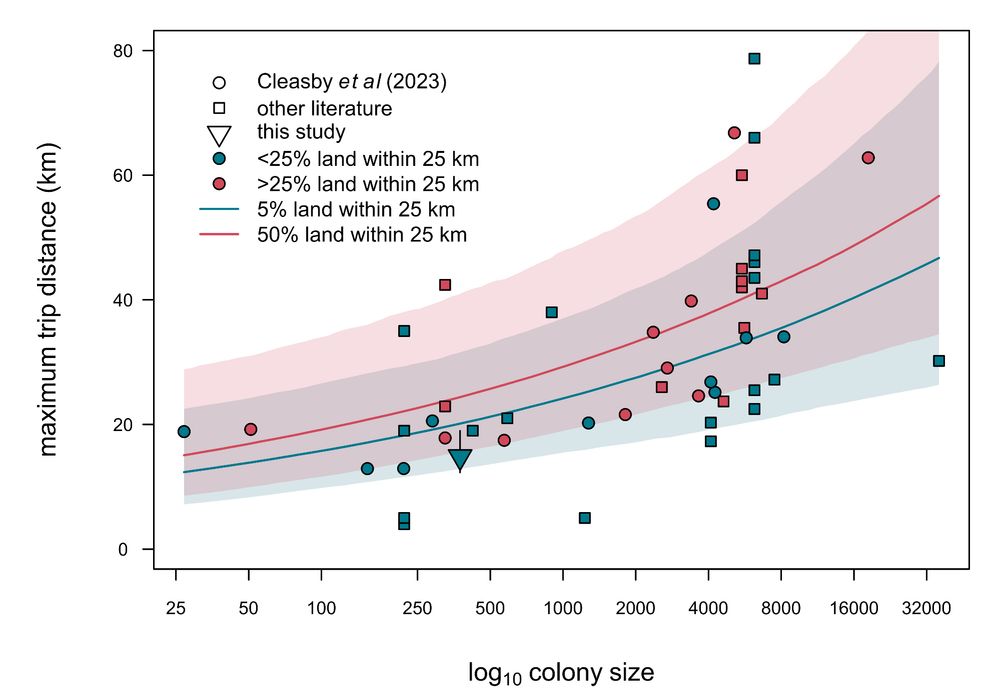
New #OA paper in the #seabird journal (@theseabirdgroup.bsky.social)! We GPS-tracked Black-legged #Kittiwakes breeding on an offshore platform in the Dutch sector of the North Sea. In short, we show that they have a short foraging range compared to coastal... 1/6
www.seabirdgroup.org.uk/seabird-37
www.seabirdgroup.org.uk/seabird-37
Reposted by Rob van Bemmelen
Our team analysed the correlation of N deposition with numbers of territories of 112 Swiss breeding birds species. Insectivous and herbivorous species were more negatively associated with N deposistion, as well as ground-nesting species. Read more here: doi.org/10.1111/cobi...

October 30, 2025 at 8:42 AM
Our team analysed the correlation of N deposition with numbers of territories of 112 Swiss breeding birds species. Insectivous and herbivorous species were more negatively associated with N deposistion, as well as ground-nesting species. Read more here: doi.org/10.1111/cobi...
Reposted by Rob van Bemmelen
Hey seabird folks - have you ever thought "*ANOTHER* talk about ?!" So did we.
So we reviewed 3000 conference abstracts to see which species get the spotlight. Huge work from @ingridpollet.bsky.social with me and @seabirdsentinel.bsky.social
www.sciencedirect.com/science/arti...
So we reviewed 3000 conference abstracts to see which species get the spotlight. Huge work from @ingridpollet.bsky.social with me and @seabirdsentinel.bsky.social
www.sciencedirect.com/science/arti...

October 25, 2025 at 9:51 AM
Hey seabird folks - have you ever thought "*ANOTHER* talk about ?!" So did we.
So we reviewed 3000 conference abstracts to see which species get the spotlight. Huge work from @ingridpollet.bsky.social with me and @seabirdsentinel.bsky.social
www.sciencedirect.com/science/arti...
So we reviewed 3000 conference abstracts to see which species get the spotlight. Huge work from @ingridpollet.bsky.social with me and @seabirdsentinel.bsky.social
www.sciencedirect.com/science/arti...
Reposted by Rob van Bemmelen
I'm super excited to share our new paper on Norwegian lemming genomics just published in @pnas.org!! Read the paper here: www.pnas.org/doi/epub/10....
Summary ⬇️
Summary ⬇️
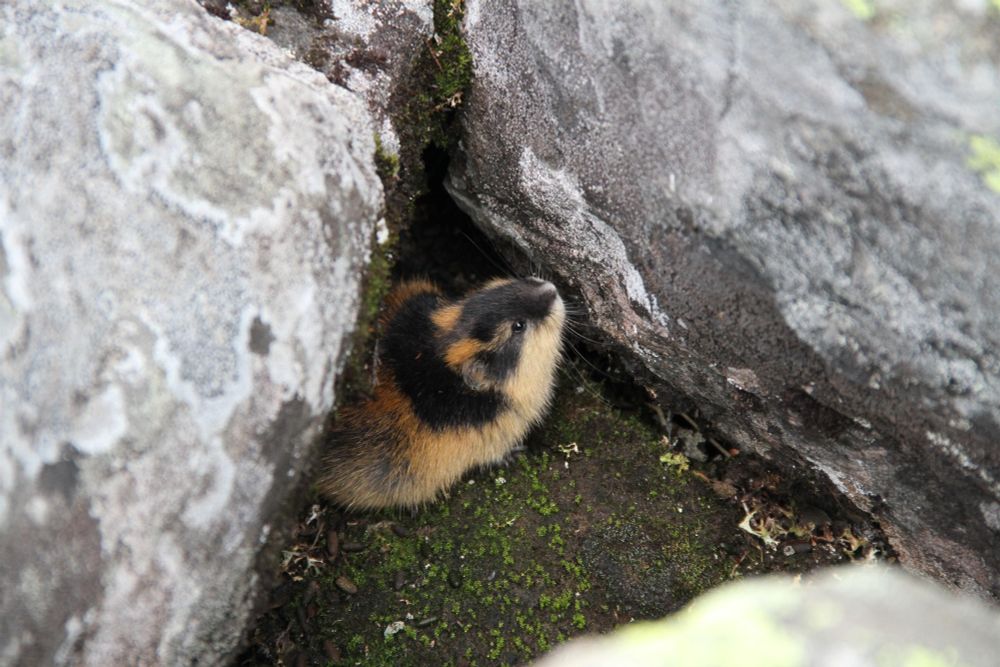
June 30, 2025 at 11:43 PM
I'm super excited to share our new paper on Norwegian lemming genomics just published in @pnas.org!! Read the paper here: www.pnas.org/doi/epub/10....
Summary ⬇️
Summary ⬇️
Reposted by Rob van Bemmelen
Mass mortality of Black-legged Kittiwakes, Norway, 2023: more than 15,000 birds dead, population reduction of 50%. genotype EA-2022-BB
👉 www.biorxiv.org/content/10.1...
👉 www.biorxiv.org/content/10.1...

May 27, 2025 at 5:46 AM
Mass mortality of Black-legged Kittiwakes, Norway, 2023: more than 15,000 birds dead, population reduction of 50%. genotype EA-2022-BB
👉 www.biorxiv.org/content/10.1...
👉 www.biorxiv.org/content/10.1...
Reposted by Rob van Bemmelen
Zoals verwacht komt de Ministeriële commissie Economie en Natuurherstel niet met een oplossing voor de stikstofproblematiek. Het kabinet kiest ervoor om de natuur verder te laten verslechteren en ondernemers nog eens 10 jaar in onzekerheid te laten zitten. nos.nl/artikel/2564...

Kabinet wil uitstoot stikstof in 2035 halveren
Vrijdag komt het kabinet met de contouren van het nieuwe stikstofbeleid. Leidend daarbij wordt de uitstoot van stikstof bij de bron, dus bij boeren en bedrijven zelf.
nos.nl
April 24, 2025 at 5:45 AM
Zoals verwacht komt de Ministeriële commissie Economie en Natuurherstel niet met een oplossing voor de stikstofproblematiek. Het kabinet kiest ervoor om de natuur verder te laten verslechteren en ondernemers nog eens 10 jaar in onzekerheid te laten zitten. nos.nl/artikel/2564...
Reposted by Rob van Bemmelen
🚨Publication in @globalchangebio.bsky.social by Lameris et al.
→ Early snowmelt = earlier egg-laying, but only 2 waterfowl arrived earlier.
→ Over time, most arrived earlier—regardless of snowmelt or laying.
→ Why? Faster migration: shorter stopovers = earlier arrival.
🔗 doi.org/10.1111/gcb....
→ Early snowmelt = earlier egg-laying, but only 2 waterfowl arrived earlier.
→ Over time, most arrived earlier—regardless of snowmelt or laying.
→ Why? Faster migration: shorter stopovers = earlier arrival.
🔗 doi.org/10.1111/gcb....

Migratory Birds Advance Spring Arrival and Egg‐Laying in the Arctic, Mostly by Travelling Faster
A warming climate is affecting the phenology of life on earth, including when birds migrate and start breeding. We show that earlier arrival is a general pattern also for birds travelling to the Arct...
doi.org
April 9, 2025 at 11:06 AM
🚨Publication in @globalchangebio.bsky.social by Lameris et al.
→ Early snowmelt = earlier egg-laying, but only 2 waterfowl arrived earlier.
→ Over time, most arrived earlier—regardless of snowmelt or laying.
→ Why? Faster migration: shorter stopovers = earlier arrival.
🔗 doi.org/10.1111/gcb....
→ Early snowmelt = earlier egg-laying, but only 2 waterfowl arrived earlier.
→ Over time, most arrived earlier—regardless of snowmelt or laying.
→ Why? Faster migration: shorter stopovers = earlier arrival.
🔗 doi.org/10.1111/gcb....
Reposted by Rob van Bemmelen
NEW PAPER in #ornithology shows that the survival of migratory #seabirds (Arctic skuas) has decreased in the last decades, but is not related to large-scale ocean indices: www.int-res.com/abstracts/me...
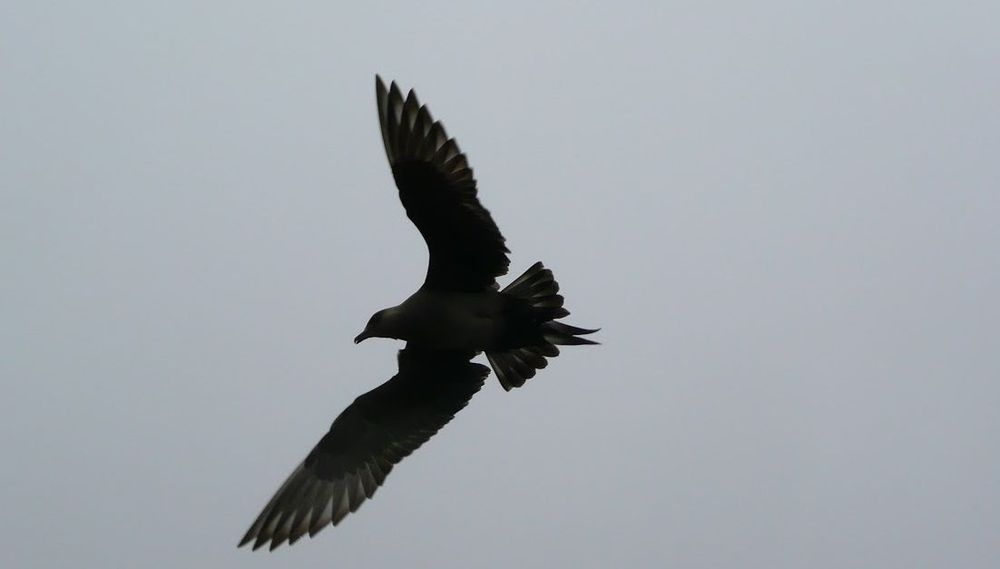
March 12, 2025 at 4:44 PM
NEW PAPER in #ornithology shows that the survival of migratory #seabirds (Arctic skuas) has decreased in the last decades, but is not related to large-scale ocean indices: www.int-res.com/abstracts/me...
Reposted by Rob van Bemmelen
Working on avian vagrancy? @pauldufour80.bsky.social and myself are organising a symposium at the EOU Conference 2025 at Bangor University, Wales (UK) from 18-22 August 2025 #Ornithology please submit abstracts to: auth.oxfordabstracts.com?redirect=/st... 🪶🌍
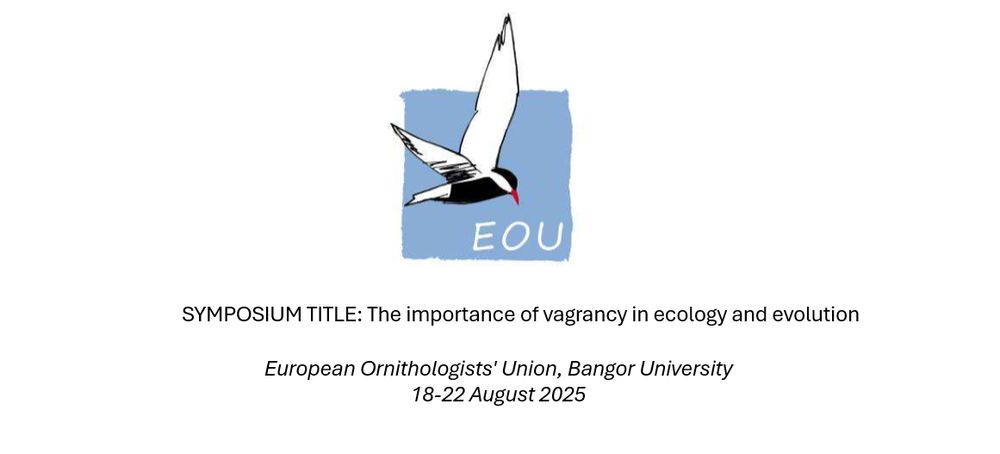
March 10, 2025 at 11:29 AM
Working on avian vagrancy? @pauldufour80.bsky.social and myself are organising a symposium at the EOU Conference 2025 at Bangor University, Wales (UK) from 18-22 August 2025 #Ornithology please submit abstracts to: auth.oxfordabstracts.com?redirect=/st... 🪶🌍
Reposted by Rob van Bemmelen
Our paper is out, and it is distressing.
Rapid butterfly declines across the United States during the 21st century | Science www.science.org/doi/10.1126/...
Rapid butterfly declines across the United States during the 21st century | Science www.science.org/doi/10.1126/...
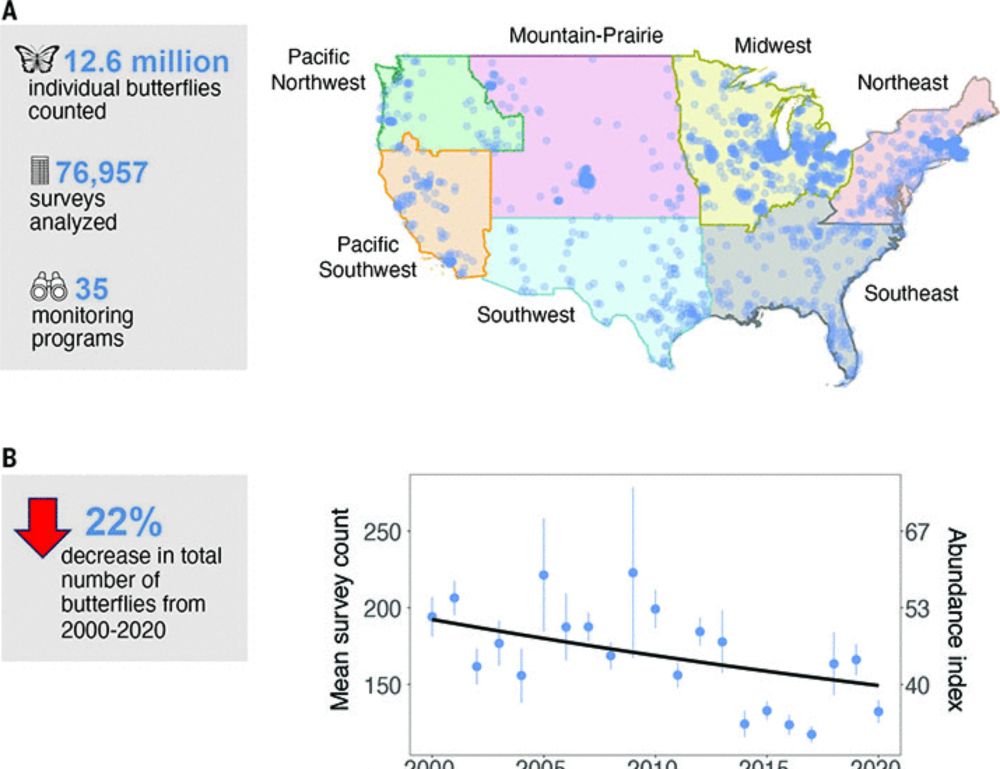
Rapid butterfly declines across the United States during the 21st century
Numerous declines have been documented across insect groups, and the potential consequences of insect losses are dire. Butterflies are the most surveyed insect taxa, yet analyses have been limited in ...
www.science.org
March 6, 2025 at 7:38 PM
Our paper is out, and it is distressing.
Rapid butterfly declines across the United States during the 21st century | Science www.science.org/doi/10.1126/...
Rapid butterfly declines across the United States during the 21st century | Science www.science.org/doi/10.1126/...
New #OA paper in the #seabird journal (@theseabirdgroup.bsky.social)! We GPS-tracked Black-legged #Kittiwakes breeding on an offshore platform in the Dutch sector of the North Sea. In short, we show that they have a short foraging range compared to coastal... 1/6
www.seabirdgroup.org.uk/seabird-37
www.seabirdgroup.org.uk/seabird-37


March 5, 2025 at 10:30 AM
New #OA paper in the #seabird journal (@theseabirdgroup.bsky.social)! We GPS-tracked Black-legged #Kittiwakes breeding on an offshore platform in the Dutch sector of the North Sea. In short, we show that they have a short foraging range compared to coastal... 1/6
www.seabirdgroup.org.uk/seabird-37
www.seabirdgroup.org.uk/seabird-37
Reposted by Rob van Bemmelen
🚨NEW OPEN ACCESS PAPER🚨details how we delineated six #MarineFlyways using #seabird #tracking data & novel analytical methods
➡️ doi.org/10.1111/geb.70004
🧪 #ornithology #migration #BLScience
@birdlifeglobal.bsky.social
We are grateful to GOBI @iki-germany.bsky.social for funding the project
🧵1/5
➡️ doi.org/10.1111/geb.70004
🧪 #ornithology #migration #BLScience
@birdlifeglobal.bsky.social
We are grateful to GOBI @iki-germany.bsky.social for funding the project
🧵1/5
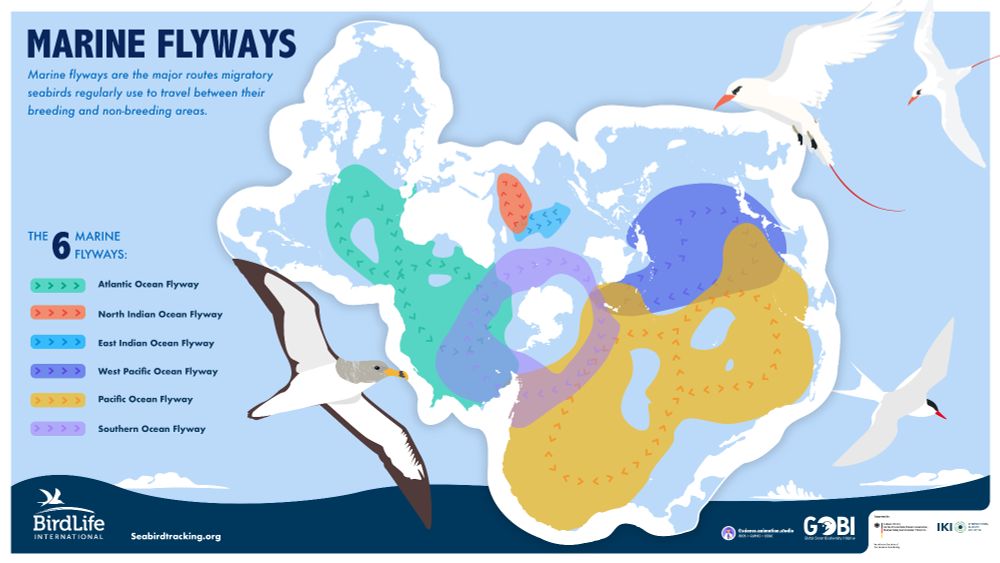
February 17, 2025 at 10:04 AM
🚨NEW OPEN ACCESS PAPER🚨details how we delineated six #MarineFlyways using #seabird #tracking data & novel analytical methods
➡️ doi.org/10.1111/geb.70004
🧪 #ornithology #migration #BLScience
@birdlifeglobal.bsky.social
We are grateful to GOBI @iki-germany.bsky.social for funding the project
🧵1/5
➡️ doi.org/10.1111/geb.70004
🧪 #ornithology #migration #BLScience
@birdlifeglobal.bsky.social
We are grateful to GOBI @iki-germany.bsky.social for funding the project
🧵1/5
Reposted by Rob van Bemmelen
Bustnes et al. The pollution fast-track to the Arctic: how southern wintering areas contribute to organochlorine loads in a migrant seabird breeding in the Arctic academic.oup.com/etc/advance-... #ornithology #teamskua

The pollution fast-track to the Arctic: how southern wintering areas contribute to organochlorine loads in a migrant seabird breeding in the Arctic
Abstract. This study examines how southern wintering areas may contribute to organochlorine (OCs) loads in arctic seabirds during breeding. Light-sensitive
academic.oup.com
February 17, 2025 at 8:22 AM
Bustnes et al. The pollution fast-track to the Arctic: how southern wintering areas contribute to organochlorine loads in a migrant seabird breeding in the Arctic academic.oup.com/etc/advance-... #ornithology #teamskua
Reposted by Rob van Bemmelen
🚨NEW OPEN ACCESS PAPER🚨details how we delineated six #MarineFlyways applying a novel approach onto #seabird #tracking data: doi.org/10.1111/geb.70004 🧪
See the short animation via: www.seabirdtracking.org/case-studies... explaining how the marine flyways can be a framework to support #conservation
See the short animation via: www.seabirdtracking.org/case-studies... explaining how the marine flyways can be a framework to support #conservation

February 17, 2025 at 12:23 PM
🚨NEW OPEN ACCESS PAPER🚨details how we delineated six #MarineFlyways applying a novel approach onto #seabird #tracking data: doi.org/10.1111/geb.70004 🧪
See the short animation via: www.seabirdtracking.org/case-studies... explaining how the marine flyways can be a framework to support #conservation
See the short animation via: www.seabirdtracking.org/case-studies... explaining how the marine flyways can be a framework to support #conservation
The second paper, led by Kat Snell and Ines dos Santos (at @mpi-animalbehav.bsky.social), is about Arctic Skuas breeding at the Faroe Islands. Here, analysis of 24 years of ringing data suggests strong declines in the survival rates of both adults and juveniles. 1/3 doi.org/10.3354/meps...

Wintering, rather than breeding, oceanic conditions may modulate declining survival in a long-distance migratory seabird
KEY WORDS: Mortality · Carry-over effects · CMR modelling · Stercorarius parasiticus
doi.org
February 14, 2025 at 3:49 PM
The second paper, led by Kat Snell and Ines dos Santos (at @mpi-animalbehav.bsky.social), is about Arctic Skuas breeding at the Faroe Islands. Here, analysis of 24 years of ringing data suggests strong declines in the survival rates of both adults and juveniles. 1/3 doi.org/10.3354/meps...
Happy to share two new papers on Arctic Skuas where I contributed. First: a paper led by Jan Ove Bustnes (@ninanatureresearch.bsky.social) on pollutants found in the blood of Arctic Skuas breeding on Svalbard and at Slettnes. Arctic Skuas show large variation...
academic.oup.com/etc/advance-... 1/2
academic.oup.com/etc/advance-... 1/2
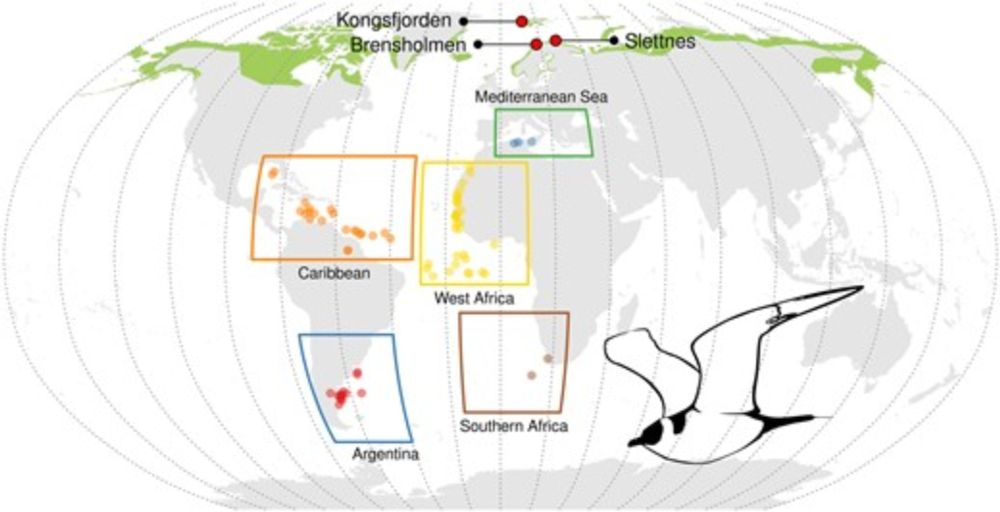
The pollution fast-track to the Arctic: how southern wintering areas contribute to organochlorine loads in a migrant seabird breeding in the Arctic
Abstract. This study examines how southern wintering areas may contribute to organochlorine (OCs) loads in arctic seabirds during breeding. Light-sensitive
academic.oup.com
February 14, 2025 at 3:44 PM
Happy to share two new papers on Arctic Skuas where I contributed. First: a paper led by Jan Ove Bustnes (@ninanatureresearch.bsky.social) on pollutants found in the blood of Arctic Skuas breeding on Svalbard and at Slettnes. Arctic Skuas show large variation...
academic.oup.com/etc/advance-... 1/2
academic.oup.com/etc/advance-... 1/2
Reposted by Rob van Bemmelen
Our new paper, based on data from 1,705 studies, shows that pesticides are toxic to organisms they are not intended to harm, including fungi, microbes, plants, insects, & vertebrates such as ourselves. Questions the wisdom of applying over 3 million tonnes of them every year...
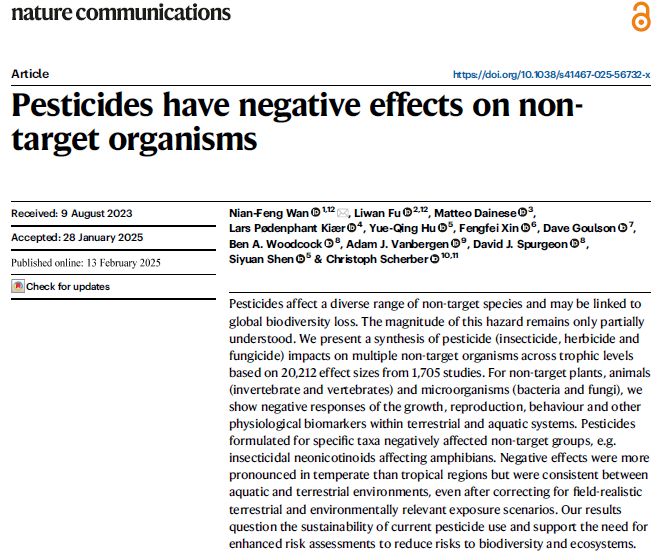
February 13, 2025 at 4:14 PM
Our new paper, based on data from 1,705 studies, shows that pesticides are toxic to organisms they are not intended to harm, including fungi, microbes, plants, insects, & vertebrates such as ourselves. Questions the wisdom of applying over 3 million tonnes of them every year...
Reposted by Rob van Bemmelen
Peatlands occupy just 3% of all land but contain more carbon than all of the world’s forests.
Often overlooked: typically flat, wet, often inaccessible, not always picturesque & all the carbon they hold is hiding below the surface.
80% of the UK bogs are degraded by draining, overgrazing, burning.
Often overlooked: typically flat, wet, often inaccessible, not always picturesque & all the carbon they hold is hiding below the surface.
80% of the UK bogs are degraded by draining, overgrazing, burning.
World’s largely unprotected peatlands are ticking ‘carbon bomb’, warns study
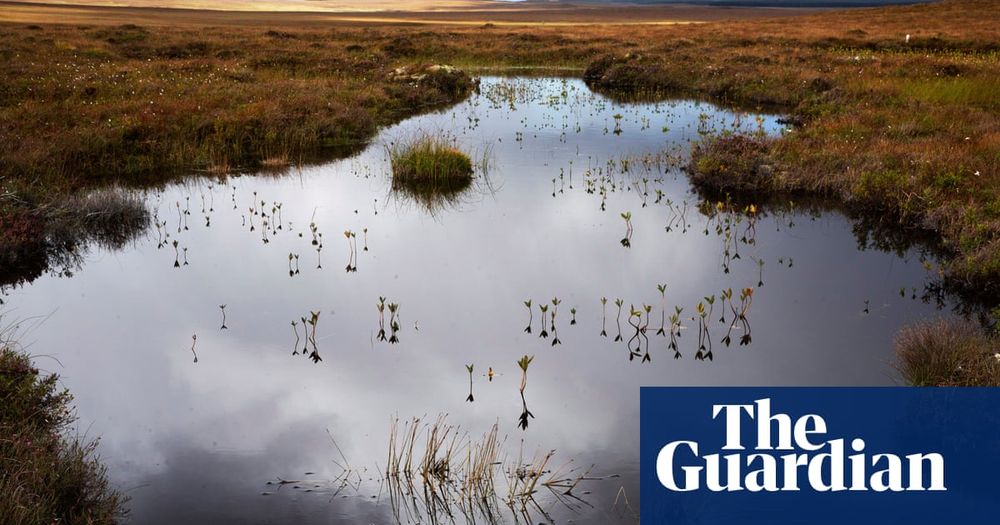
World’s largely unprotected peatlands are ticking ‘carbon bomb’, warns study
Bogs and swamps are a colossal carbon store but their continued destruction would blow climate change targets
The world’s peatlands are “dangerously underprotected” despite the colossal amount of climate-heating carbon dioxide already being emitted due…
www.theguardian.com
February 13, 2025 at 9:04 AM
Peatlands occupy just 3% of all land but contain more carbon than all of the world’s forests.
Often overlooked: typically flat, wet, often inaccessible, not always picturesque & all the carbon they hold is hiding below the surface.
80% of the UK bogs are degraded by draining, overgrazing, burning.
Often overlooked: typically flat, wet, often inaccessible, not always picturesque & all the carbon they hold is hiding below the surface.
80% of the UK bogs are degraded by draining, overgrazing, burning.
Reposted by Rob van Bemmelen
Sobering. When I talk to people about long-term bird population declines in N America, I mention that the main cause is habitat loss, not climate change - yet. But new research shows that climate change is causing bird declines even in otherwise pristine places. www.theguardian.com/environment/...
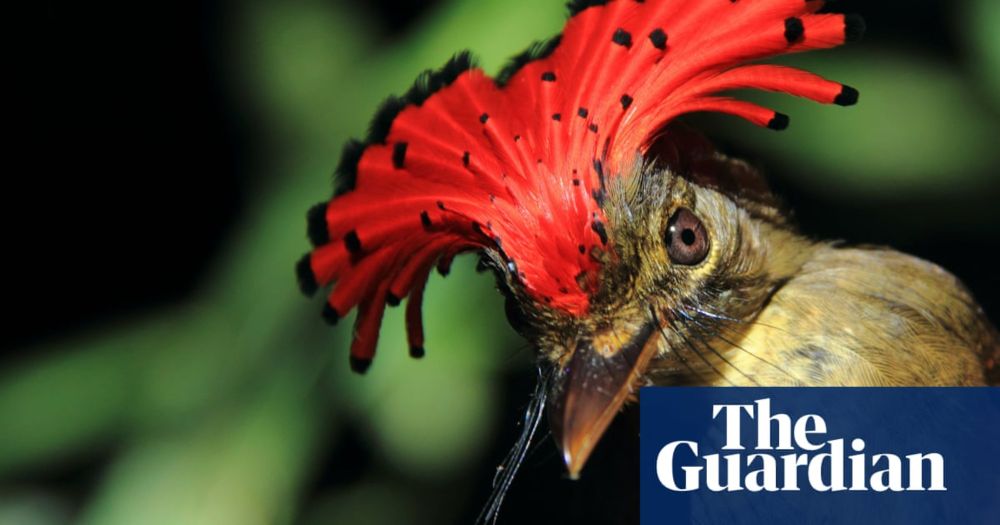
In the most untouched, pristine parts of the Amazon, birds are dying. Scientists may finally know why
Populations have been falling for decades, even in tracts of forest undamaged by humans. Experts have spent two decades trying to understand what is going on
www.theguardian.com
January 30, 2025 at 5:02 PM
Sobering. When I talk to people about long-term bird population declines in N America, I mention that the main cause is habitat loss, not climate change - yet. But new research shows that climate change is causing bird declines even in otherwise pristine places. www.theguardian.com/environment/...
Reposted by Rob van Bemmelen
A thread on quite how incredible the Texel Spectacled Eider record is, given that almost the entire world population (~250K) winters together around 62°00'N, 173°00'W in polynyas - gaps in the sea ice in the Bering Sea, like the ones below👇 🧵#Ornithology 1/


January 14, 2025 at 4:19 PM
A thread on quite how incredible the Texel Spectacled Eider record is, given that almost the entire world population (~250K) winters together around 62°00'N, 173°00'W in polynyas - gaps in the sea ice in the Bering Sea, like the ones below👇 🧵#Ornithology 1/
Reposted by Rob van Bemmelen
Seabird 36 is now live! Head to this link to take a read -> seabirdgroup.org.uk/seabird-36
Seabird 36 - Seabird Group
The Seabird Group was founded to promote and co-ordinate the study and conservation of seabirds. We organise conferences and publish the journal SEABIRD.
seabirdgroup.org.uk
January 8, 2025 at 2:30 PM
Seabird 36 is now live! Head to this link to take a read -> seabirdgroup.org.uk/seabird-36
Very happy to have this paper on Arctic Skuas finally out in 2024. Still two more PhD-chapters to go!
🕊️ **Migratory Patterns Unveiled** 🕊️
5. **Synchronous Timing of Return**:
Tracking Arctic skuas from various breeding populations, we discovered how they synchronize their return to breeding sites despite differing migration strategies. doi.org/10.1186/s404...
5. **Synchronous Timing of Return**:
Tracking Arctic skuas from various breeding populations, we discovered how they synchronize their return to breeding sites despite differing migration strategies. doi.org/10.1186/s404...

Synchronous timing of return to breeding sites in a long-distance migratory seabird with ocean-scale variation in migration schedules - Movement Ecology
Background Migratory birds generally have tightly scheduled annual cycles, in which delays can have carry-over effects on the timing of later events, ultimately impacting reproductive output. Whether ...
doi.org
January 1, 2025 at 10:39 AM
Very happy to have this paper on Arctic Skuas finally out in 2024. Still two more PhD-chapters to go!
Reposted by Rob van Bemmelen
At the end of the year we can look back at the butterfly year 2024 in NL. What went up, what went down, and what species things did we notice? A threat in English. /1
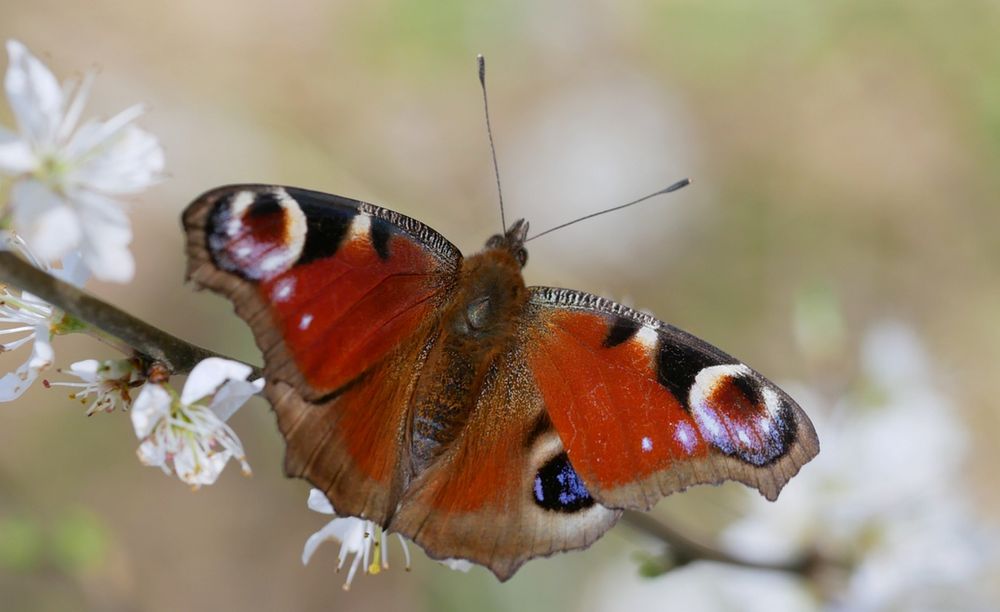
December 29, 2024 at 3:37 PM
At the end of the year we can look back at the butterfly year 2024 in NL. What went up, what went down, and what species things did we notice? A threat in English. /1
Reposted by Rob van Bemmelen
For my first post here, I’m happy to share our new paper just published in @ibisjournal.bsky.social Thanks to a great team effort, we made a small step forward in the study of Siberian vagrants in Europe and clarified the status of two (pseudo) vagrants: the YBW & the Sib Chiffchaff. Some results 🧵
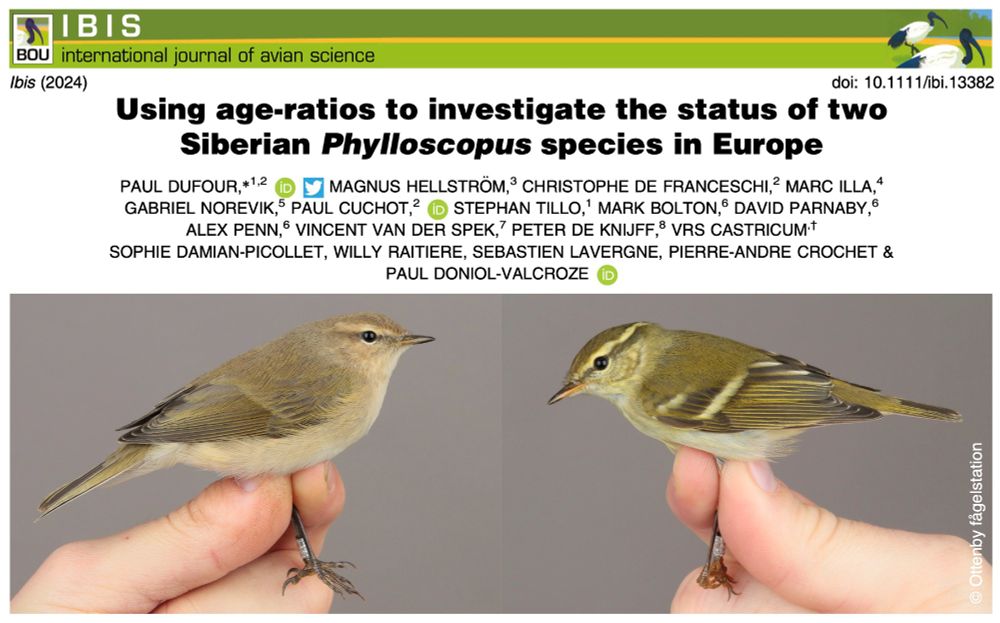
December 11, 2024 at 1:42 PM
For my first post here, I’m happy to share our new paper just published in @ibisjournal.bsky.social Thanks to a great team effort, we made a small step forward in the study of Siberian vagrants in Europe and clarified the status of two (pseudo) vagrants: the YBW & the Sib Chiffchaff. Some results 🧵

